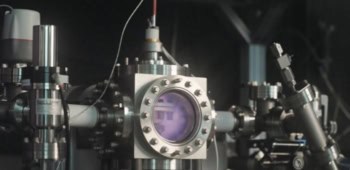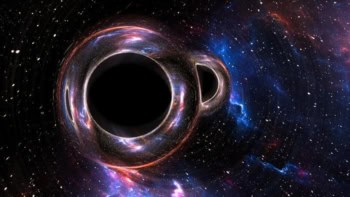Physicists at Purdue University in Indiana claim to have found new evidence for nuclear fusion in a tabletop device. Yiban Xu and Adam Butt say that firing sound waves into a beaker of deuterated acetone that has been "seeded" with neutrons produces tritium and further neutrons through the process of fusion. Known as "bubble fusion", the phenomenon met with widespread scepticism when it was first reported in 2002. The new results are likely to be just as controversial.

Sonoluminescence describes the process whereby bubbles in a liquid emit tiny flashes of light when they are forced to expand and collapse by sound waves. Some physicists believe that the pressures and temperatures inside the collapsing bubbles could be high enough to initiate nuclear reactions. If achieved, such fusion could lead to a new clean energy source.
In 2002, and again last year, Rusi Taleyarkhan and colleagues published controversial results describing how they had used high-energy neutrons to create bubbles of gas in a beaker of acetone in which the hydrogen atoms had been replaced by deuterium (D). Taleyarkhan, formerly of Oak Ridge National Laboratory and now at Purdue, claimed that the temperature inside the collapsing bubbles was more than a million degrees Kelvin — high enough for two deuterium nuclei to undergo a fusion reaction. DD fusion reactions can produce a helium-3 nucleus plus a neutron, or a tritium nucleus and a proton.
However, on both occasions these results were questioned by other researchers in the field. Now, Xu and Butt have performed the experiment again using the same test chamber designed by Taleyarkhan but with radioactive californium-252 as the source of neutrons (Nuclear Engineering and Design 235 1317). This isotope emits neutrons continually, rather than in pulses like previous sources.
Xu and Butt exposed their beaker of acetone to the neutron source and then bombarded the liquid with ultrasound. The sound waves create tiny bubbles in the liquid, which then expand before imploding. As before, the duo say they have seen tritium as well as neutrons with the characteristic energy (in the 2.5 MeV range) for DD fusion reactions. When ordinary, undeuterated acetone is used, fusion products are not observed, they say.
Aaron Galonsky of Michigan State University, who was sceptical of Taleyarkhan’s original results, is sceptical again. He explains that the pulses of neutrons the Purdue team see could be coming from the enormous neutron source, which emits over 2 million neutrons per second. Many of the pulses might not be from neutrons at all but from the 2.2 MeV gamma rays resulting from thermalization and capture of source neutrons by the hydrogen in the paraffin walls of the chamber. Xu and Butt give no explanation for these pulses or indeed the neutron pulses they observe in ordinary acetone, he adds.
Seth Putterman and co-workers at UCLA are also involved in efforts to generate fusion reactions in sonoluminescence but so far they have been unable to reproduce the Purdue group’s earlier results. However, the Defense Advanced Research Projects Agency (DARPA) in the US has recently funded Taleyarkhan and Putterman to collaborate and exchange information on bubble fusion.



